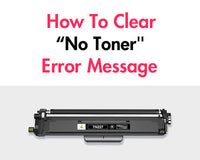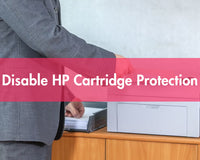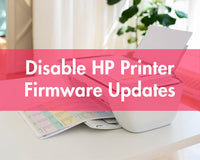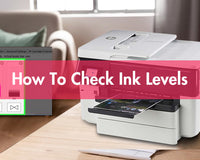Brother printers are popular for their reliability, print quality, and ease of use. But even with their intuitive design, new users can still be confused: How do you properly load paper into a Brother printer? Whether you're printing documents, photos, or labels, knowing the correct paper tray and how to handle paper can prevent jams and improve print quality. This blog will guide you through the various ways to put paper in a Brother printer, explain the purpose of each tray, and answer frequently asked questions about paper loading and handling.
Where Do I Load Paper into My Brother Printer?
Where is the paper tray on a Brother printer? The answer depends on your specific model and the type of task you're performing. Brother printers typically have multiple paper inputs, depending on whether you're printing, copying, or scanning. The most common are the main tray, manual feed slot, and multipurpose tray. For scanning, there's the automatic document feeder (ADF) and flatbed scanner.
Let's look at each one so you know exactly where to insert the paper, depending on the task.
Main Tray
The main paper tray, also called the paper cassette or paper drawer, is the default paper tray for everyday printing and copying. You can find it on the bottom of most Brother printers, e.g., Brother HL-L2325DW, Brother MFC-L2710DW, Brother HL-L3290CDW, Brother MFC-L3750CDW, and Brother HL-L8360CDW. This paper tray is designed to:
- Plain paper (standard 20–24 lb weight)
- Letter-sized (8.5 x 11 inches), legal (8.5 x 14 inches), or A4 paper
If you're using a Brother printer designed for heavy-duty printing or a business environment, such as the Brother MFC-L8900CDW, you might also see multiple paper trays stacked at the bottom.
These additional trays can accommodate different sizes or types of paper, helping you print in batches and switching between print jobs without having to manually change the paper each time.
Manual Feed Slot
The manual feed slot is used when you want to print or copy on special media without loading a full stack. It's usually located on the front or back of the printer, near the top.
This manual feed slot is suitable for:
- Envelopes
- Cardstock
- Labels
- Thick paper
To avoid paper jams or damage, always load one sheet at a time unless otherwise instructed in your printer manual. Common printers include the Brother HL-L2395DW, Brother MFC-L3710CW, and Brother HL-L3270CDW.
Automatic Document Feeder (ADF)
An automatic document feeder (ADF) is a feature used to scan and copy multiple pages simultaneously. It's located on top of scanning-capable printers, particularly all-in-one models. The feeder automatically feeds each page into the scanner.
The ADF supports the following paper types:
- Plain paper
- Letter or A4-sized documents
- Lightweight to medium-weight documents (avoid thick cardstock or wrinkled paper)
Do not use glossy or specialty paper in the ADF, as it may cause paper feeding problems. Common Brother all-in-one printers with ADFs include the Brother DCP-L2640DW, Brother MFC-J4335DW, and Brother MFC-L5915DW.
Printer Scanner (Flatbed)
If you need to scan thick, fragile, or delicate documents, use a flatbed scanner. Simply open the scanner lid and place the document face down on the glass.
This is best for:
- Photos
- IDs and cards
- Books
- Delicate or thick materials
You don't need to load paper into a flatbed scanner, as it's designed for scanning only, one page at a time. Generally speaking, consumer-grade/home-use Brother printers that claim to scan almost always include a flatbed scanner.
MP Tray
Some Brother laser printers also feature an MP (Multi-Purpose) tray, usually located on the back or front of the printer. This is a flexible paper feed slot ideal for short-run specialty printing.
Compatible media includes:
- Envelopes
- Labels
- Cardstock
- Glossy photo paper
A good example is the Brother HL-L8360CDW. It has an MP tray behind a front flap, perfect for thicker or less common paper types.
Summary Table of Paper Loading Areas
|
Tray Type |
Location |
Primary Use |
Supported Paper Types |
|
Main Tray |
Bottom front |
Printing, Copying |
Plain paper, Legal, Letter, A4 |
|
Manual Feed Slot |
Front or back (top) |
Special media printing |
Labels, Envelopes, Cardstock |
|
Automatic Document Feeder |
Top of printer |
Scanning multiple pages |
Plain paper, A4, Letter |
|
Flatbed Scanner |
Under scanner lid |
Scanning fragile items |
Photos, IDs, Books |
|
MP Tray |
Front/back flap |
Short-run specialty |
Glossy paper, Envelopes, Cardstock |
How to Put Paper in a Brother Printer
How to print paper from a Brother printer? It starts with loading the right type of paper in the right place. The method is slightly different depending on whether you are using plain paper or specialty media.
Plain Paper
- Open the Main Tray: Pull out the paper tray located at the bottom front.
- Adjust the Guides: Move the side paper guides to match the paper size.
- Load Paper: Place the paper print-side down (unless your model specifies otherwise). Do not overfill.
- Reinsert the Tray: Push the tray all the way in until it clicks.
- Confirm on Display: Your printer may prompt you to confirm the paper size/type. Make sure to select “Plain” and the correct size.
This video shows a similar paper loading process.
Specialty Paper
- Use the Manual Feed Slot or MP Tray: Open the appropriate tray depending on the model.
- Adjust Guides: Make sure the side guides are snug to prevent skewing.
- Insert One Sheet at a Time: For envelopes, labels, glossy paper, and thicker stocks, feed them individually.
- Print Settings: On your computer, select the matching paper type and source tray from the print dialog.
- Avoid Touching Print Surface: For glossy or coated paper, avoid smudging by not touching the print surface.
Printer Paper Loading FAQ
Even with the best instructions, paper problems can still occur. Here are answers to some of our users' most common questions.
1. Can I Use Recycled Paper in My Brother Printer?
Yes, most Brother printers can use recycled paper, as long as it meets standards for weight and smoothness. It's best to choose high-quality recycled paper to avoid paper jams. Avoid using paper with an uneven texture or with previously printed ink that could melt inside the laser printer.
2. Why Does My Printer Keep Jamming Even After I Load Paper Correctly?
Paper jams can be caused by an overfilled tray, bent or curled paper, using an incompatible paper type (for example, using glossy photo paper in the ADF), or dirty rollers or paper feed mechanisms.
Double-check that the paper tray is correct for the paper type. If the paper jam persists, the paper may be stuck in the paper path inside the printer. See the blog How to Fix a Paper Jam in HP Printer for instructions on how to remove jammed paper.
3. Can I Print on Both Sides of the Paper?
This depends on your printer's specifications. Check the official website or manual to see if it supports this feature. Generally, many Brother printers support automatic duplexing, allowing you to print on both sides without turning the pages. If your printer doesn't support this feature, you can manually reinsert the paper, just double-check the paper orientation.
4. What’s the Best Way to Store Paper for My Printer?
Keep paper in its original packaging until ready to use. It's best to store it in a cool, dry place away from direct sunlight and moisture. Also, keep your paper flat and free of curl. Avoid storing paper near heaters or windows, as this can cause curling and feeding problems.
5. Where Else Can I Find Out Where to Load Paper for My Printer?
Your Brother printer's user manual is the best source for paper tray diagrams and paper specifications. You can also visit Brother's support website and search by model for video guides and printable instructions.
6. Where Do I Put Paper in an HP Printer?
While this guide focuses on Brother printers, HP printers generally have a similar layout:
- Main tray: For everyday printing, usually at the front or bottom
- Manual feed or specialty tray: For labels or envelopes
- ADF and scanner bed: For scanning and copying
Because HP printer models can vary, be sure to check their manuals for specific information.
Conclusion
Whether you're printing invoices, photos, or envelopes, knowing how and where to load paper in your Brother printer will ensure smooth operation and professional results.
